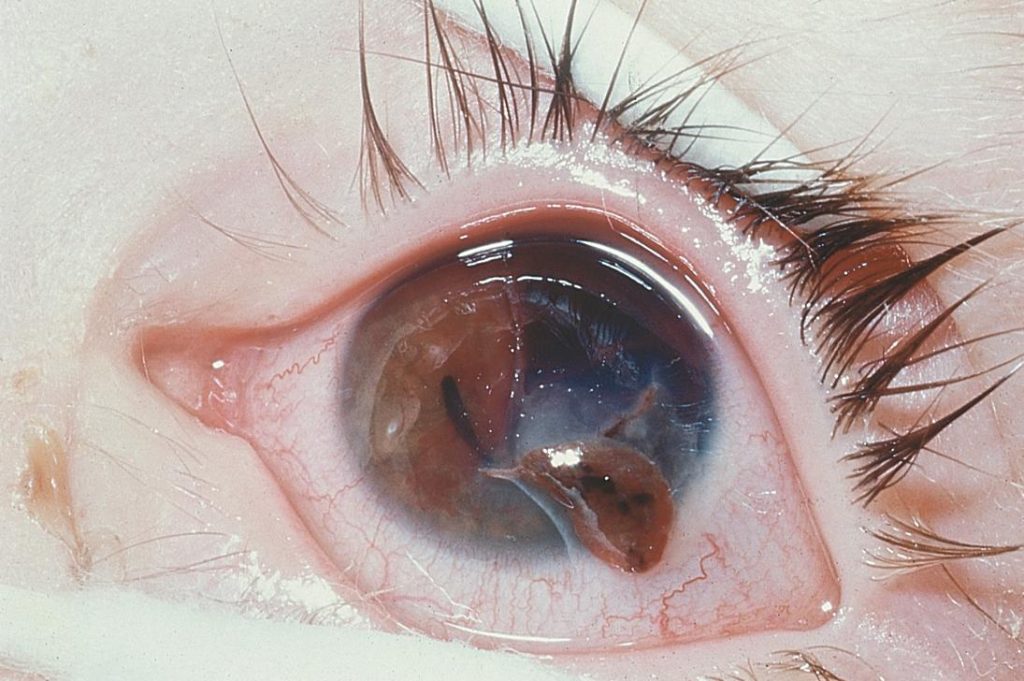The cornea is the eye’s crystal-clear front window. A cut on the cornea is known as a corneal laceration. Usually, it is brought on by something sharp flying into the eye. Another factor that can trigger it is a strong object, such a metallic hand tool, impacting the eye. A corneal laceration, which can partially or completely pierce the cornea, is more severe than a corneal abrasion. A complete thickness laceration may result from a corneal laceration that is sufficiently severe. This is when the laceration cuts completely through the cornea and causes a ruptured globe, a tear into the eyeball itself.
A corneal laceration is a highly serious injury that needs to be treated right once by a doctor in order to prevent permanent vision loss.
A corneal laceration can result from any activity where fast-moving items have a chance to fly into the eye. Activities like cutting wood, grinding metal, clipping grass, and carving stone are the most frequent causes of corneal lacerations.
If enough power is applied, contact with dust, dirt, sand, or even the edge of a piece of paper might potentially pierce the cornea.
When engaging in high-risk activities, protective eyewear can help avoid the majority of corneal lacerations.
In the case that your eye has been injured, you should gently put a shield in front of the eye to protect it. Cut away the bottom part of a paper cup and tape this piece to the area around the eye. Wear this to protect your eye until you get medical help. Do not rinse with water. Do not remove the object stuck in eye. Do not rub or apply pressure to eye. Avoid giving aspirin, ibuprofen or other non-steroidal, anti-inflammatory drugs. These drugs thin the blood and may increase bleeding. after you have finished protecting the eye, see a physician immediately
Severe pain, tears, sensitivity to light, blurred or decreased vision, haemorrhage (blood in the eye), and the feeling that something is in the eye are all possible sign and symptoms of a corneal laceration.
You should consult an ophthalmologist right once if you experience any corneal laceration symptoms. To ascertain the severity of the damage, he or she will do a thorough eye examination. Your ophthalmologist will try to determine if the laceration is full thickness or partial thickness by measuring the cut.
Your ophthalmologist may use numbing eye medications to help keep your eye open while they check the corneal laceration. Additionally, he or she might stain the eyes with fluorescein. This test looks for corneal injury using an orange dye called fluorescein and a blue light.
Surgery is commonly performed to repair an eye injury and to avoid infection. Surgery helps to prevent further damage to the eye and remove any foreign object remaining in the eye after the injury.
Severe lacerations may need several surgeries for repair and can result in permanent vision loss.Your eye may be covered with a patch after surgery to keep it safe. Additionally, your ophthalmologist might prescribe you medicine. These may consist of painkillers and healing aids.
You could be at risk for consequences like glaucoma, infection, and retinal detachment if you have a corneal laceration. Following your immediate treatment, it is crucial that you get care from your ophthalmologist.
At The Eye Center- Dr. Mahnaz Naveed Shah & Associates our team of eight ophthalmology subspecialists/ eye specialists, eye surgeons who are considered amongst the very best eye specialists in Karachi and in Pakistan, have the diagnostic and treatment capabilities to treat from the simplest to the most complex patients. We work hard to provide our patients with the best possible medical and surgical eye care, in a state of the art purpose built eye care facility. We offer the entire array of medical, laser and surgical treatments to help provide patients the best possible care in the most efficient, safe and ethical manner.
If you need an appointment, please contact us at 03041119544 during our working hours or leave us a WhatsApp message at +923028291799 and someone will connect with you. Walk-in appointments are also available for emergencies. We can also be reached through our web portal on www.surgicaleyecenter.org


